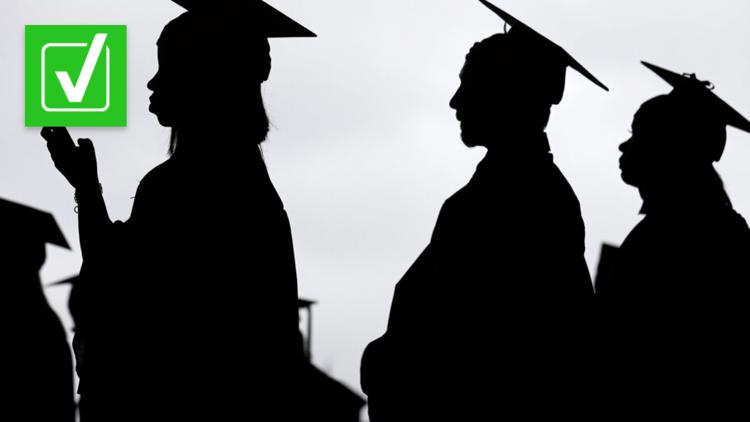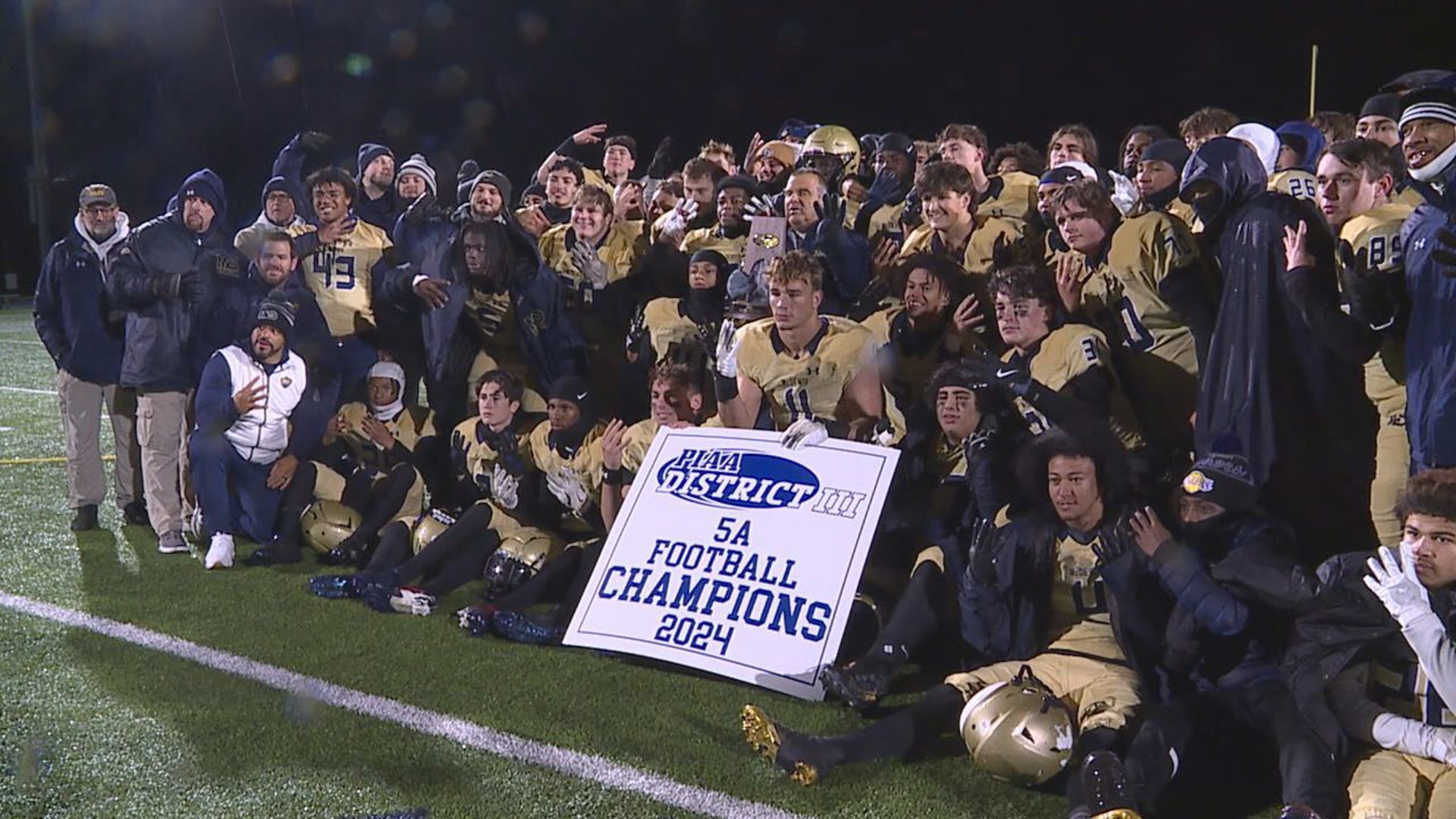UPDATE (6/30/23): The Supreme Court has struck down the Biden administration's one-time student loan forgiveness plan. Loan repayments are expected to resume later this summer. You can read more information here.
Tens of millions of U.S. student loan borrowers are set to see debt relief after an announcement from President Joe Biden’s administration on Aug. 24.
The student loan forgiveness plan eliminates up to $10,000 in debt for people who meet certain income thresholds. Those who received federal Pell Grants as undergraduate students are eligible for $20,000 in debt relief if they meet the same requirements.
But the administration’s most recent plan isn’t the only avenue for debt forgiveness. Following the announcement, VERIFY reader Ashley asked the team if she’s still eligible for full federal student loan forgiveness as a public service worker.
THE QUESTION
Can eligible public service workers still get full federal student loan forgiveness?
THE SOURCES
THE ANSWER
Yes, eligible public service workers can still get full federal student loan forgiveness through the Public Service Loan Forgiveness program.
WHAT WE FOUND
The Public Service Loan Forgiveness (PSLF) program was created by the College Cost Reduction and Access Act of 2007 during the George W. Bush administration, long before the Biden administration’s recent announcement about student loan cancellation.
The PSLF program forgives the full remaining balance on a qualifying person’s federal student loans after they have made 10 years’ worth of payments (totaling 120 payments).
While the Biden administration’s recent announcement makes a wider group of borrowers newly eligible for some debt forgiveness, it doesn’t do away with the PSLF Program.
More from VERIFY: Fast Facts about student loan forgiveness
Betsy Mayotte, president and founder of The Institute of Student Loan Advisors, told VERIFY the broad student loan forgiveness plan “will in no way negatively impact people pursuing PSLF.”
Public service workers who are eligible for full student loan forgiveness should “continue following advice and steps toward PSLF and not see this new cancellation as a separate path,” Jessica Thompson, vice president at The Institute for College Access and Success, added.
Who qualifies for the PSLF program?
Borrowers need to have worked full-time for a federal, state, tribal or local government, the military, or a qualifying nonprofit. People can receive forgiveness under the program if they have had more than one employer over the course of 10 years. There is no income requirement to qualify.
People can search for qualifying employers and receive help applying for the program by using the Department of Education’s online PSLF Help Tool.
In the most recent announcement on student loan forgiveness, the Department of Education did say it is proposing some “long-term changes” to the PSLF program. Those include allowing more payments – including partial, lump sum and late payments – and certain kinds of deferments and forbearances such as those for PeaceCorps and AmeriCorps service, National Guard duty and military service to qualify for the PSLF program.
More from VERIFY: Yes, you can get a refund if you paid federal student loans during the payment pause
What is the limited PSLF waiver and what changes does it make?
The Biden administration already established temporary changes to the PSLF program through a temporary waiver that is in effect through Oct. 31, 2022. These changes, which took effect in October 2021, make it easier for borrowers to receive credit for past payments.
The waiver may increase the amount of payments that qualify toward a borrower’s forgiveness, include periods of qualifying employment that didn’t previously count due to loan types or repayment history, and allow borrowers to seek forgiveness by consolidating into Direct Loans.
Enrollments in the PSLF program on or after Nov. 1, 2022 will not be eligible to take advantage of changes established by the waiver.
To qualify under the waiver, borrowers need to have at least one Direct Loan and at least one approved application for the PSLF program.
If borrowers have outstanding FFEL Loans or Perkins Loans, for example, they can still qualify by consolidating them into a Direct Loan and applying for the PSLF program no later than Oct. 31, 2022, the White House explains on its website.
The Federal Student Aid Office has an application on its website for a Direct Consolidation Loan, which allows borrowers to consolidate multiple federal education loans into one at no cost.
Here are the changes that the waiver establishes through Oct. 31:
- Past periods of repayment will now count toward whether or not a borrower made a payment, made that payment on time, for the full amount due, or on a qualifying payment plan.
- Forbearance periods of 12 consecutive months or greater, or 32 cumulative months or greater, count under the waiver.
- Months spent in deferment before 2013 will count under the waiver. The Department of Education will also include economic hardship deferment on or after Jan. 1, 2013. These periods of deferments will be applied to a person’s student loan account in fall 2022.
Periods of default on loans and in-school deferment still do not qualify under the waiver.
Dozens of U.S. Congress members recently urged Department of Education Secretary Miguel Cordona in a letter to extend the PSLF waiver until at least July 1, 2023, “when the Department’s proposed rules to improve and expand federal student debt relief programs, including PSLF, are currently on track to take effect,” a press release from Sen. Chris Van Hollen (D-Md.) says.



